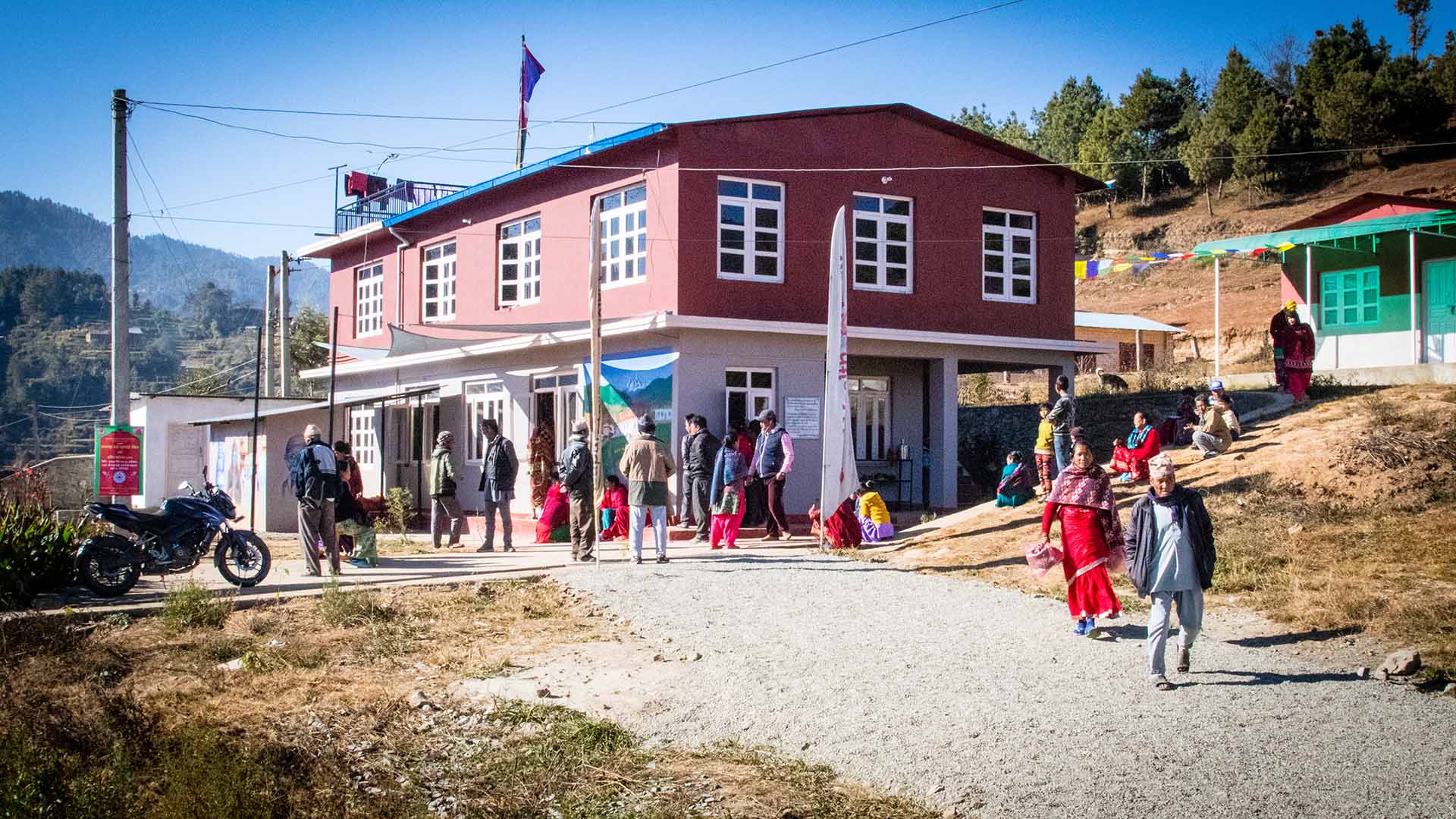News Blog
Latest News From Our Volunteers in Nepal
VOLUNTEER COMMUNITY CARE CLINICS IN NEPAL
Nepal remains one of the poorest countries in the world and has been plagued with political unrest and military conflict for the past decade. In 2015, a pair of major earthquakes devastated this small and fragile country.
Since 2008, the Acupuncture Relief Project has provided over 300,000 treatments to patients living in rural villages outside of Kathmandu Nepal. Our efforts include the treatment of patients living without access to modern medical care as well as people suffering from extreme poverty, substance abuse and social disfranchisement.
Common conditions include musculoskeletal pain, digestive pain, hypertension, diabetes, stroke rehabilitation, uterine prolapse, asthma, and recovery from tuberculosis treatment, typhoid fever, and surgery.
FEATURED CASE STUDIES
Rheumatoid Arthritis +
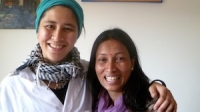
35-year-old female presents with multiple bilateral joint pain beginning 18 months previously and had received a diagnosis of…
Autism Spectrum Disorder +
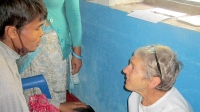
20-year-old male patient presents with decreased mental capacity, which his mother states has been present since birth. He…
Spinal Trauma Sequelae with Osteoarthritis of Right Knee +
60-year-old female presents with spinal trauma sequela consisting of constant mid- to high grade pain and restricted flexion…
Chronic Vomiting +
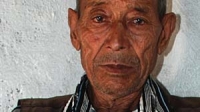
80-year-old male presents with vomiting 20 minutes after each meal for 2 years. At the time of initial…
COMPASSION CONNECT : DOCUMENTARY SERIES
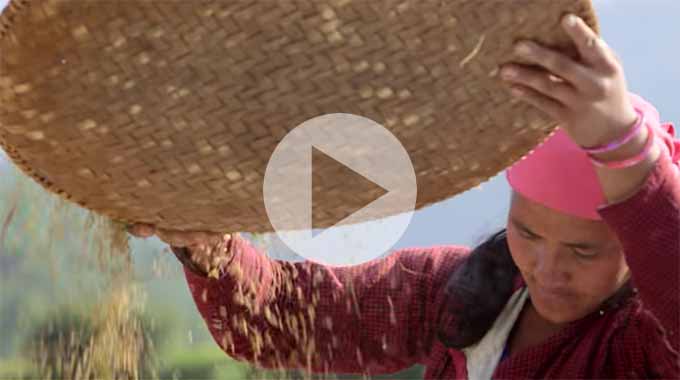
Episode 1
Rural Primary Care
In the aftermath of the 2015 Gorkha Earthquake, this episode explores the challenges of providing basic medical access for people living in rural areas.
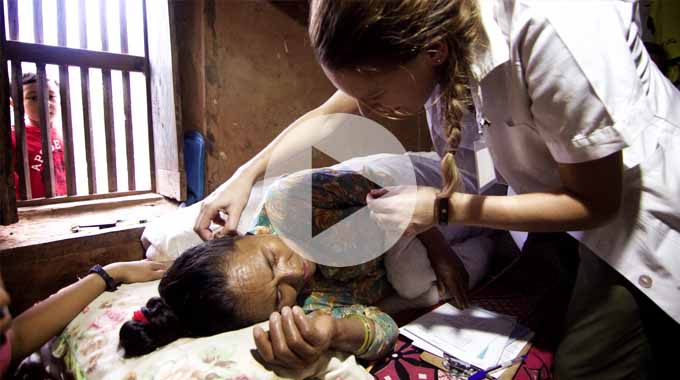
Episode 2
Integrated Medicine
Acupuncture Relief Project tackles complicated medical cases through accurate assessment and the cooperation of both governmental and non-governmental agencies.
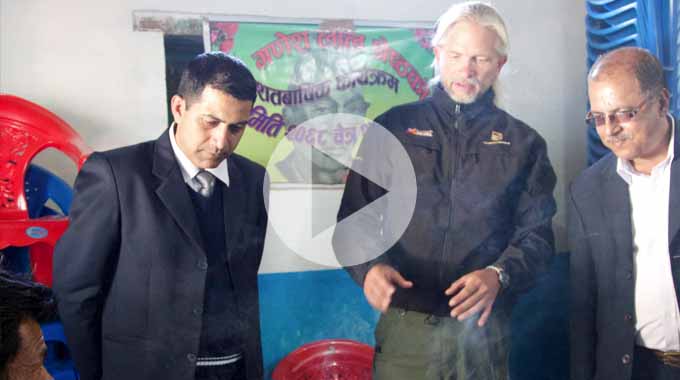
Episode 3
Working With The Government
Cooperation with the local government yields a unique opportunities to establish a new integrated medicine outpost in Bajra Barahi, Makawanpur, Nepal.
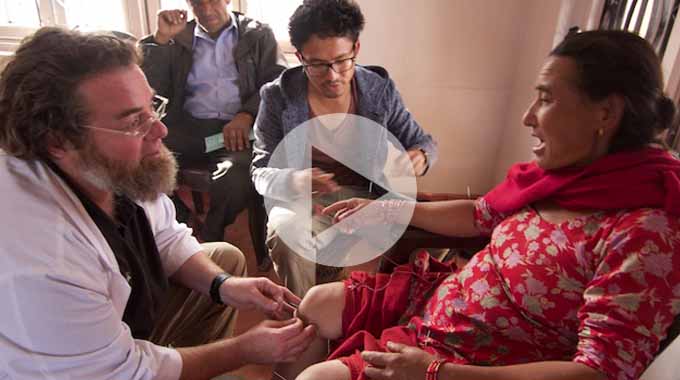
Episode 4
Case Management
Complicated medical cases require extraordinary effort. This episode follows 4-year-old Sushmita in her battle with tuberculosis.
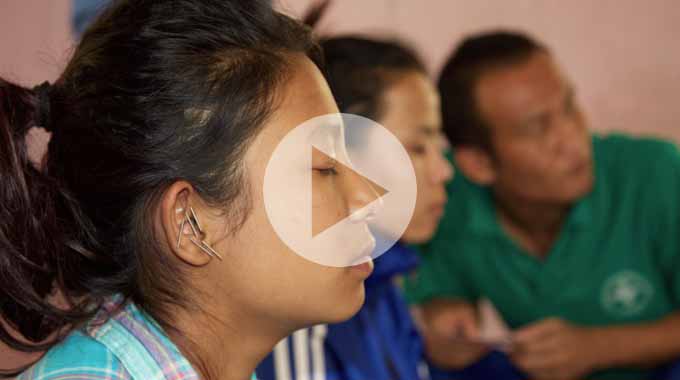
Episode 5
Sober Recovery
Drug and alcohol abuse is a constant issue in both rural and urban areas of Nepal. Local customs and few treatment facilities prove difficult obstacles.
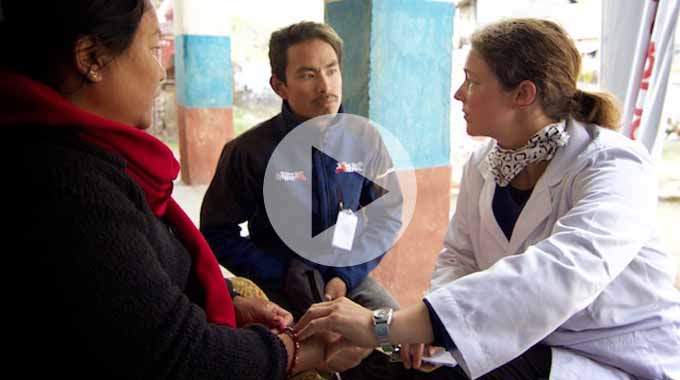
Episode 6
The Interpreters
Interpreters help make a critical connection between patients and practitioners. This episode explores the people that make our medicine possible and what it takes to do the job.
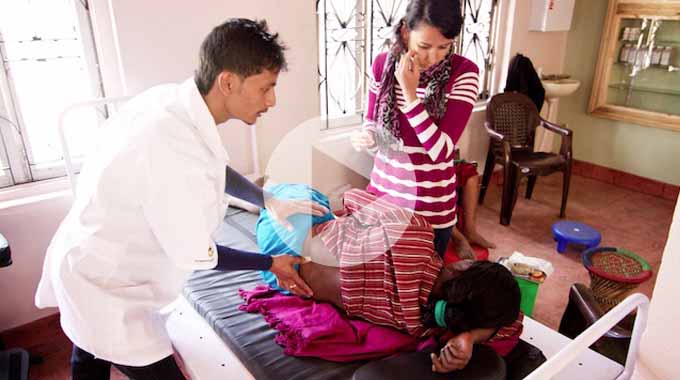
Episode 7
Future Doctors of Nepal
This episode looks at the people and the process of creating a new generation of Nepali rural health providers.
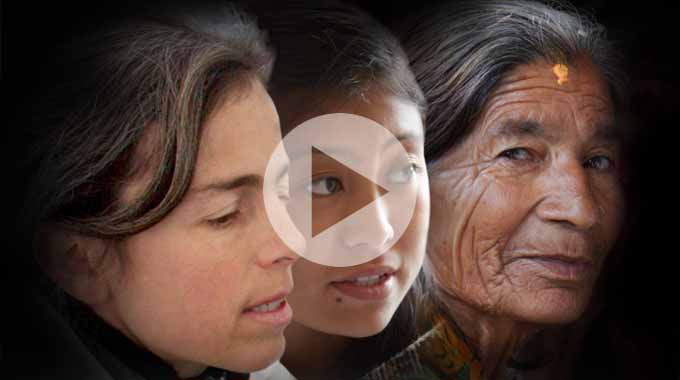
Compassion Connects
2012 Pilot Episode
In this 2011, documentary, Film-maker Tristan Stoch successfully illustrates many of the complexities of providing primary medical care in a third world environment.
From Our Blog
- Details
- By Felicity Woebkenberg
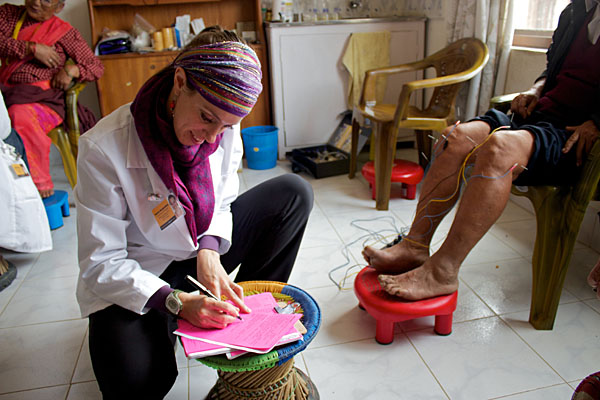
I knew that the time that I spent in Nepal with the Acupuncture Relief Project would be a personal conquest of service. However, when I walked through the doors of the Vajra Varahi Healthcare Clinic I had no idea of the transformative journey that would lie ahead of me. I did not grasp that I would soon need all of my inner strength and courage to face many new challenges strait on. As I reflect, I see that I have learned some valuable lessons along the way. More importantly I see the friendships and personal connections that will eternally impact my life.
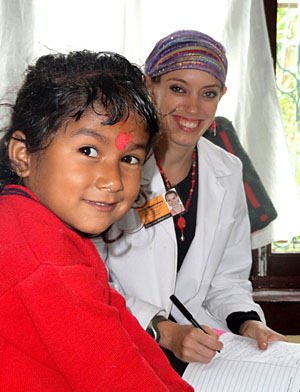 As a practitioner, I have grown in ways that I never could have anticipated. As a human being I have been filled with gratitude and compassion for the world, and my soul has been inspired by the resiliency of the human spirit in the face of hardship, obstacles, and poverty.
As a practitioner, I have grown in ways that I never could have anticipated. As a human being I have been filled with gratitude and compassion for the world, and my soul has been inspired by the resiliency of the human spirit in the face of hardship, obstacles, and poverty.
As many of my patients have said, "Khe garne?" or “What is there to do?” I am placed in a position where I can provide hope where this word has long been forgotten. For some this is done with the insertion of a needle, for others it is through creating a space in which they can speak their hearts and truth, and for others it is sharing a similar destination of healing.
I think of my patients and the therapeutic relationship that we have formed in a relatively short period of time. I think of the expressive glances and common understanding that we have formed together. Through this experience, there is an intuitive knowing which I have nurtured and come to trust within myself in a new way. Slight movements of the skin, a subtle change in the tone of a voice, the way that an individual carries his or her self, and the glimmer or dullness of the eyes are all pieces of the new language that I have learned.
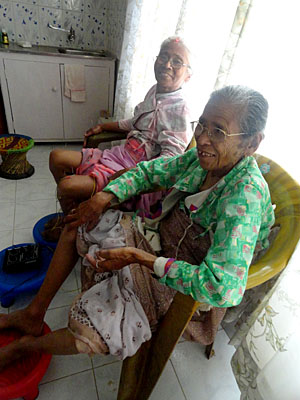 I recall the woman with knee pain whose husband suffered from typhoid fever, the man with Parkinson’s disease with the sparkle in his eye, the man with depression who echo’s beautiful tones from his trumpet across the valley, the woman with stroke sequela who is escorted into the clinic on her husband’s arm, the two women who have been friends since childhood with loving affection for each other, and the woman with the laugh that is contagious that by the end of the day everyone’s belly aches.
I recall the woman with knee pain whose husband suffered from typhoid fever, the man with Parkinson’s disease with the sparkle in his eye, the man with depression who echo’s beautiful tones from his trumpet across the valley, the woman with stroke sequela who is escorted into the clinic on her husband’s arm, the two women who have been friends since childhood with loving affection for each other, and the woman with the laugh that is contagious that by the end of the day everyone’s belly aches.
I reflect on the people that I have met, the patients that I have treated, and the moments that we have shared. And as I leave this place, there are heartstrings which are tugged with ample force reminding me of the bonds which have been made, and the people who I must leave behind. This is the choice that I have made... I have chosen to dive in and truly experience this place deeply, which has made it all the harder to let it go.
I came here to be of service to a community that needed my help. Little did I know how quickly I would become a part of it... and know it as a place that accepted me as its own. --- Felicity Woebkenberg
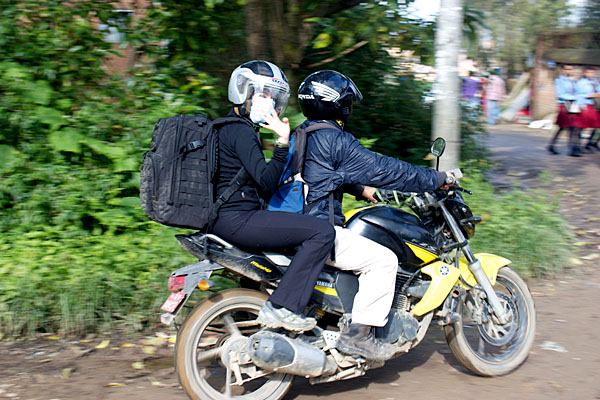
Volunteer practitioner Felicity Woebkenberg and interpreter Tsering Sherpa head out to a remote treatment site by motorbike.
- Details
- By Stacey Kett
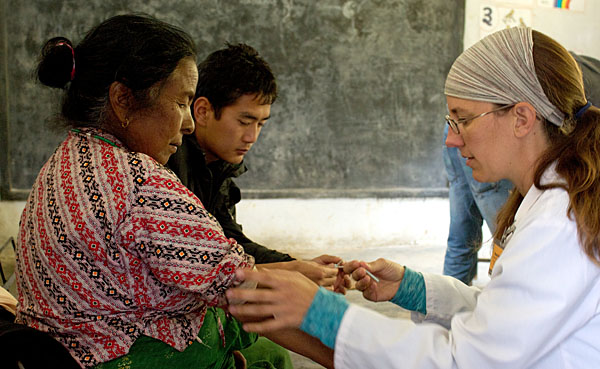
Chapagaon is surrounded by beautiful terraced rice fields. The fields are broken up into small plots that are farmed, by hand, by individual and groups of families. I see many of these family members as my patients in the Vajra Varahi Clinic. Ever since my arrival I have been taking long walks around the village wondering about the way the rice is farmed and harvested.
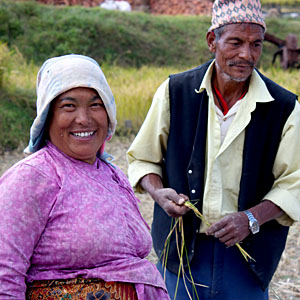 One day I was talking to a patient about her work in the fields and how this was effecting the pain she had in her body. I mentioned that before I studied acupuncture I too had been a farmer. In fact, I've longed to see these terraced fields of rice since I started farming more than 15 years ago. Rice is a staple food, and yet it's growth and harvest has always been a mystery to me. My patient looked at me in disbelief but after I asked a few more questions she invited me to come help in the fields if I wanted. This seemed like an opportunity I couldn't refuse.
One day I was talking to a patient about her work in the fields and how this was effecting the pain she had in her body. I mentioned that before I studied acupuncture I too had been a farmer. In fact, I've longed to see these terraced fields of rice since I started farming more than 15 years ago. Rice is a staple food, and yet it's growth and harvest has always been a mystery to me. My patient looked at me in disbelief but after I asked a few more questions she invited me to come help in the fields if I wanted. This seemed like an opportunity I couldn't refuse.
A few weeks later the summer rains finally stopped, the rice began to yellow and the rice kernels were full. The family of one of our interpreters, Satyamohan, had a few fields of rice that were ready to harvest. His father, Dan Bahadur, is the caretaker of the Monastery grounds that the clinic is on. Their harvest day fortunately lined up with our day off and he arranged for us to help.
We walked out to the fields and found the small plot of land that we were to harvest. I was given an iron sickle and we began cutting the rice stalks and gently placing them into piles. Next, they set up the threshing machine, set out tarps and began to bring over the piles of rice. My fellow practitioners and I watched excitedly, wondering how it was all going to work.
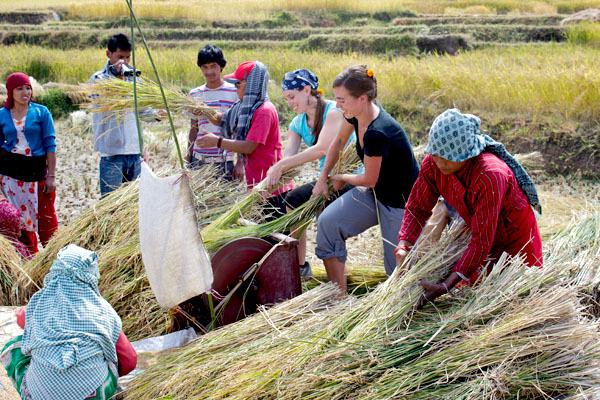
The metal threshing machine had been carried on two bamboo poles out to the fields. It has a barrel with metal spokes all over it. Powered by a foot pedal that you pump to make the barrel spin around I quickly found that it takes a little coordination. Once you get the barrel spinning, you take a bundle of rice and put seed heads against the barrel. The metal spokes knock the rice grain off the stalk and as it falls to the ground and it is caught by a tarp that is underneath. The rice is then swept into a bigger pile, winnowed and cleaned by another group of women. There are so many hands involved!
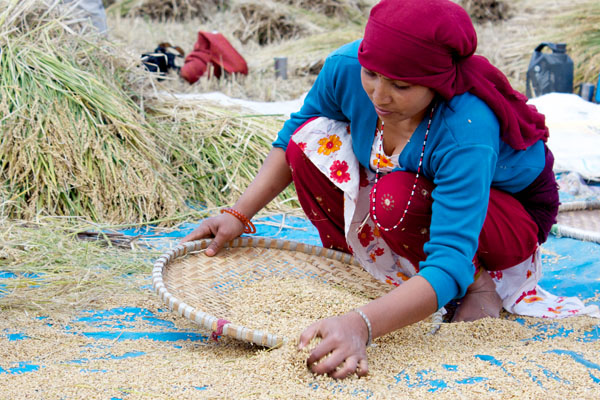
After we watched for a while they let us have a turn at pedaling the thresher. Eventually they kicked us off so that the professionals could get to work. After the rice was cleaned it was bagged up into big sacks which needed to be carried to the nearby road. We were then taught how to carry the bag of rice, using the head strap across our foreheads that also wrapped around the middle of the sack. We each carried a bag (while everyone had a good laugh at our expense) over to the road. I had immediate appreciation for the people that carry these loads every day and now understood why so many of my patient's have such strong (and sore!) necks.
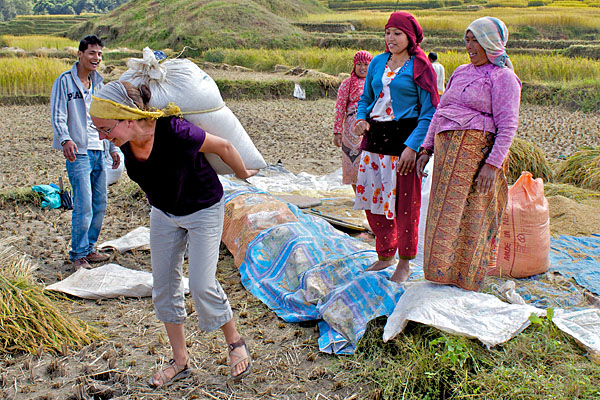
We also learned how to carry a water pot, One arm wraps around the neck and the bottom rests on your hip. The problem is that it rests right on your hip bone, which is uncomfortable after about 100 feet. The other challenge is trying to keep all the water in the pot. We all took a turn and realized why the women wear a wrap around their waist, to pad their hips and support their backs. This wrap is called a Patuka in Nepali, or Jannai in Nawari. Carrying the water pot also makes you walk with one hip off center offering some insight as to why the women here have such back and hip issues.
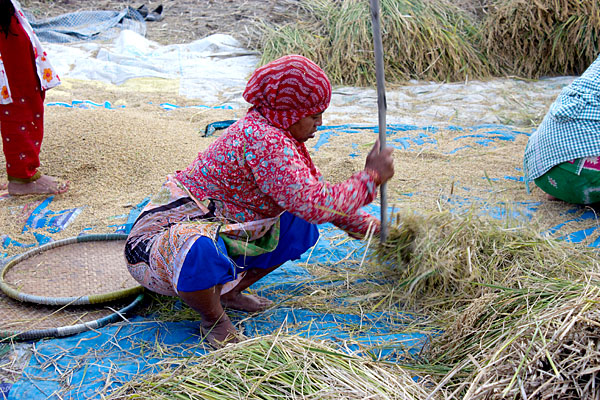
I felt so at home in the fields that day and I suddenly realized that I was becoming a part of this community. I hadn't considered how quickly this could happen, even when I have only been here for eight short weeks. Everyone was so excited that we were there, interested in knowing how they live and work. I was honored to be there. This brief experience helped me connect to the land, the people and the lifestyle in a way that I couldn't have previously imagined. My heart is so full from having had this opportunity to grow as a medical provider (and as a farmer)... it is going to be a difficult place for me to leave behind. ---Stacey Kett
- Details
- By Danielle Lombardi
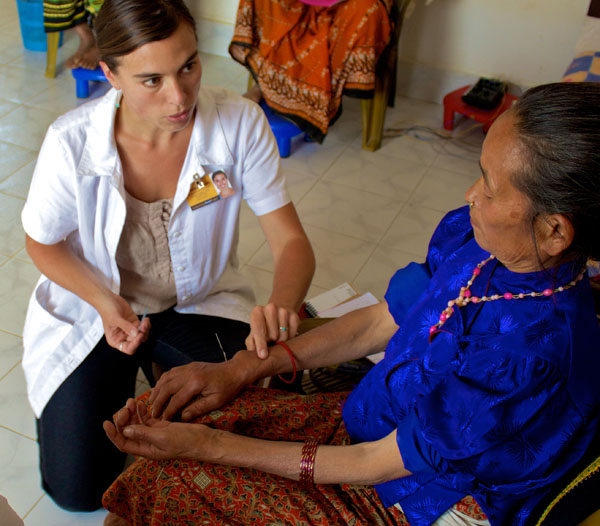
There are three women around the ages of 30, 50, and 65, who have come to see me for treatment several times. They arrive in a big group from their village, and emanate strength, solidarity and patience as they sit and wait readily in my clinic room, wearing bright saris wrapped well under patterned long sleeved frocks, with bustle-like mounds of cloth bundled up around their navels. A cascade of earrings, necklaces and nose rings of red and gold tell the stories of their marriages, while their sun worn faces, dirt caked feet and full black eyes tell the stories of their work.
In our research efforts we ask our patients their age, their primary language, and their distance of travel to get to the clinic. These three are Tamang, and walk over 4 hours to get to the clinic, where they then wait in line for treatment for another 4 hours with the crowd. When their turn comes around, they bring their hands together in the blessing of thanks, hello, goodbye: “namaste”, or, “I see the god within you”, and then they quietly point to their joints and limbs saying, “duksa” – “pain.” Although they each have a different story, they have common underlying health concerns. Their bodies hurt. They all have shoulder pain radiating down one arm. They have bad headaches wrapping across the front of their heads to the back of the neck. Their knees ache. I inquire about their work and home life to discover the cause of their pain, and an interpreter relays their collective story to me.
It is corn harvest now, soon followed by rice harvest, so the days will be long for some time. The day begins before dawn, at 4am in the fields, where they work until the late afternoon. They gather their harvest into giant baskets and sacks as heavy as themselves, and haul them back home by strapping the load across their brow, bearing the weight on their heads, necks and backs. When they return to their homes they go to the village wells and fill heavy copper water vessels, carried under one arm back to their kitchens. Then they feed and water the buffalo, goats, cows, and chickens, cook for their families, take care of the children and the old ones, nurse the sick and finally eat their dinners. They hang the ears of corn to dry in in their windows, hung from beams, or in bound up towers that look like trees. In the night they separate the corn kernels from the ears that have already dried. They leave it in mounds on the rooftops or the dirt streets until daylight, when they can spread it out flat to dry a second round in the sun. They work from 4am until midnight, resting only briefly before the next day of harvest begins again.
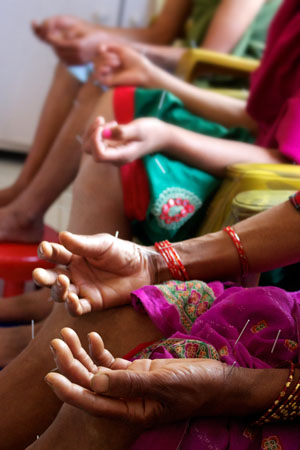 As I treat the pain from the brunt of this work, I am able to connect with each of them, learning more about their stories and perpectives on the world.
As I treat the pain from the brunt of this work, I am able to connect with each of them, learning more about their stories and perpectives on the world.
The middle of the three has asthma. When she walks up the hill carrying grasses and corn on her back, or when she bends down to clean the cow dung, from the floor she feels breathless, as if rice husks are blocking her chest and throat.
The oldest of the three sleeps only 3 hours a night because there is too much work to get done. She shows me bruise-like spots on her legs and arms where demons had punished her by biting her and sucking her blood.
The youngest one has pain in her uterus from several miscarriages, and is afraid that her family will be angry with her if she does not produce a baby soon.
I work with each of them to address their concerns, and feel grateful for the stories that they share with me in the process.
These women inspire me. They walk long distances, have strong spirits, and don’t complain. They teach me about strength and patience, and seem almost mythical in their capacity for life’s work. They well may be the hardest workers in the world. Their solidarity creates a force that is bigger than themselves, an arc of connection, fellowship, and fortitude that they lift from the feet of their ancestors, and pass on to their daughters and grandchildren. They give birth and sustain life through their labor, dedication and community, and they bear the weight of their harvested nourishment on their backs.
One of the other women waiting for treatment in the room asked out to the group and to me, “Why is it that women have so much pain?”
The answer beheld itself. ---Danielle Lombardi
Our Mission
Acupuncture Relief Project, Inc. is a volunteer-based, 501(c)3 non-profit organization (Tax ID: 26-3335265). Our mission is to provide free medical support to those affected by poverty, conflict or disaster while offering an educationally meaningful experience to influence the professional development and personal growth of compassionate medical practitioners.
